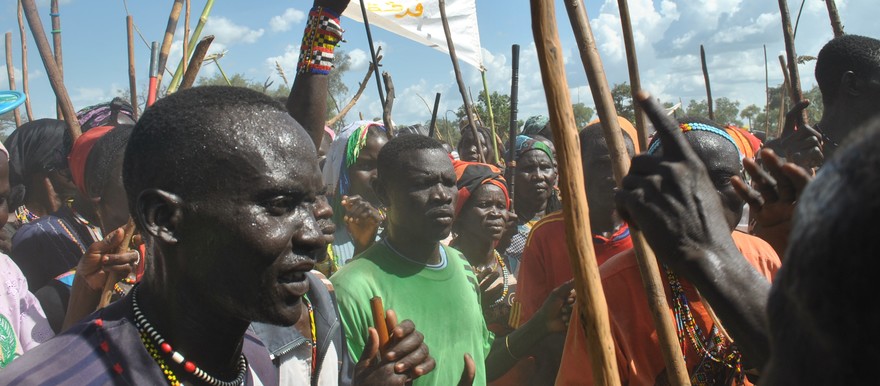Tension is said to be high between the authorities and Sudanese refugees in Yida concerning the planned transfer of the refugees from the camp’s current location.
Proposed alternative sites have stirred controversy amongst residents, many of whom are unwilling to leave their current camp in South Sudan’s Unity State.
Camp authorities and the South Sudanese government have long discussed plans to transfer the camp from its present location in Yida because of concerns over its proximity to the border.
Majur Dau Bol, the Unity state commissioner for refugees, said that the authorities do not approve of the camp’s position which is very close to the border with South Kordofan in Sudan.
Speaking to Radio Tamazuj, Bol explained that the government’s position “was a response to the international community’s experience and UNHCR’s mandate that refugee camps should be established at least 50 km away from the area or countries they have been displaced from.”
Bol noted that “the border between South Sudan and Sudan up to now is not known, as the committee which was supposed to conduct the demarcation of the border between these two countries as in the comprehensive peace agreement of 2005 didn’t carry out its duties.”
He said that international organizations have insisted that they are only able to provide emergency assistance to the refugees in Yida camp while other services will be offered at alternative locations.
The original alternative site at Nyeel in the south of Pariang County was rejected by many of the refugees because the site is muddy and makes access for those coming from the Nuba Mountains very difficult, according to Bol.
Two other areas in Unity State have since been put forward which are said to have similar conditions to Yida. Majur said the first area is located south-west of Panyang payam about 5 km from Panyang and covers an area of about 7 km long, while the second area is located around Gum-Raik area, or the old Pagol-Mangok area, which is located between Jangjang and Yida camp.
The government have formed an agreement with NGOs to construct roads and necessary infrastructure before refugees are transferred to new locations, according to the official. Yida would then be used as the base for NGOs and UNHCR as well as a transit centre for new refugees.
He confirmed the completion of construction in some parts of Nyeel camp and the start of the renovation of the Pariang schools. “They will not start transferring the refugees unless they make sure that the camp is in good condition that can accommodate people,” he said.
Yida’s camp leaders have long been opposed to plans to transfer the camp. Last month they held a tense meeting with the UNCHR High Commissioner António Guterres and Unity State Governor Taban Deng.
Radio Tamazuj learnt last week that recent changes in the camp leadership may reflect political pressures in favor of the transfer, but community and camp leaders have yet to go on record in favor of the move.




